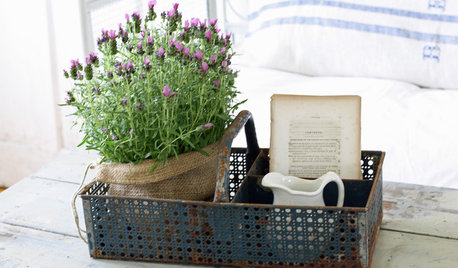Houseplants winter growth still going, what's up?
JerryVentura Jordan
12 years ago
Related Stories

MOST POPULARThe Perfect Houseplant for People Who Kill Houseplants
If you can fill a jar with water, you can keep golden pothos vine happy — and it will pay you back with cleaner air and a greener home
Full Story
HOUSEPLANTSOutsmart Winter — Make Houseplants of Your Garden Growers
No need to watch Jack Frost play Wreck the Rosemary. Bring your garden inside for the winter, using containers and these guidelines
Full Story
GARDENING GUIDESGreat Design Plant: Kumquats for a Juiced-Up Winter
Grow it for the edible fruit or its good looks alone. This citrus cousin will brighten any gray winter day
Full Story
KITCHEN COUNTERTOPSKitchen Counters: Granite, Still a Go-to Surface Choice
Every slab of this natural stone is one of a kind — but there are things to watch for while you're admiring its unique beauty
Full Story
HOUSEPLANTS8 Houseplants You Can't Kill
They're forgiving and let you forget. Houseplants don't get any easier than this
Full Story
HOUSEPLANTSMeet a Long-Lasting Houseplant With a Forgiving Heart
Low light and little watering won't scar Zee Zee plant for life; this East Africa native has a tolerant nature and an exotic beauty
Full Story
GARDENING AND LANDSCAPINGHow to Make a Pond
You can make an outdoor fish paradise of your own, for less than you might think. But you'll need this expert design wisdom
Full Story
FALL AND THANKSGIVINGSimple Pleasures: A Cozy Home in Cold Weather
Stock up on these treats and essentials to make even blustery days and snowed-in time feel special
Full Story
HOUSEPLANTSHow to Force Amaryllis Bulbs Indoors
Enjoy vibrant red blossoms even as gardens turn snowy white, by teaching this hardy repeat performer to ignore the calendar
Full Story
SELLING YOUR HOUSESave Money on Home Staging and Still Sell Faster
Spend only where it matters on home staging to keep money in your pocket and buyers lined up
Full StoryMore Discussions









chloeasha
Ohiofem 6a/5b Southwest Ohio
Related Professionals
Windham Landscape Architects & Landscape Designers · River Forest Landscape Architects & Landscape Designers · Wilmington Landscape Contractors · Fort Wayne Landscape Contractors · Pacifica Landscape Contractors · West Chicago Landscape Contractors · San Pablo Landscape Contractors · Richmond Solar Energy Systems · Bellwood Window Contractors · Emeryville Window Contractors · Poinciana Window Contractors · Baltimore Fence Contractors · Burbank Fence Contractors · Park Ridge Fence Contractors · Peoria Fence Contractorsmeyermike_1micha
JerryVentura JordanOriginal Author
tapla (mid-Michigan, USDA z5b-6a)
greenman28 NorCal 7b/8a
JerryVentura JordanOriginal Author
tommyr_gw Zone 6
greenman28 NorCal 7b/8a
JerryVentura JordanOriginal Author